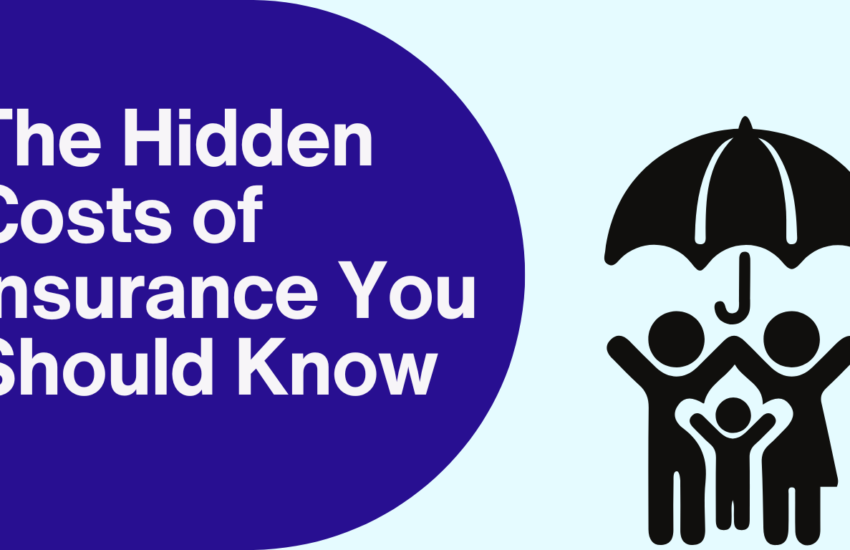The Hidden Costs of Insurance You Should Know
When it comes to insurance, most people are familiar with the obvious costs: monthly premiums, deductibles, and copayments. However, there are numerous hidden costs associated with insurance that can significantly impact your financial health. Understanding these hidden costs is crucial for making informed decisions about your insurance policies and ensuring that you are adequately protected without being caught off guard.
1. Premium Inflation
One of the most overlooked hidden costs of insurance is premium inflation. While you may be paying a set amount each month now, premiums can rise significantly over time due to factors such as increased risk, changes in the insurer’s costs, or broader economic conditions. For example, health insurance premiums may increase annually based on the rising cost of medical care, and auto insurance premiums can climb due to higher vehicle repair costs or increased claims in your area.
2. Coverage Gaps
Insurance policies often come with limitations and exclusions that can lead to coverage gaps. These gaps occur when specific risks or damages are not covered by your policy, leaving you financially vulnerable. For instance, standard homeowners’ insurance policies might not cover flood damage or certain natural disasters. If you experience a loss in these areas, you could face substantial out-of-pocket expenses. Identifying and addressing these gaps by purchasing additional coverage or endorsements can be an additional cost.
3. Deductibles and Out-of-Pocket Expenses
While deductibles are a known cost, their impact can be more significant than anticipated. A high deductible means that you will need to pay a substantial amount before your insurance coverage kicks in. Additionally, many policies have out-of-pocket maximums, which can be substantial. For example, in health insurance, you may have to cover the full cost of medical care up to a certain limit before your insurer covers further expenses. These out-of-pocket costs can quickly add up, especially in the event of a major claim.
4. Exclusions and Limitations
Insurance policies often contain various exclusions and limitations that can affect how much you are covered for certain types of claims. For instance, a car insurance policy might exclude coverage for damages incurred while driving under the influence or engaging in illegal activities. Understanding these exclusions is essential to avoid unpleasant surprises when filing a claim. Often, policyholders discover these limitations only after they need to make a claim, leading to frustration and unexpected expenses.
5. Policy Fees and Administrative Costs
Many insurance policies come with additional fees that are not always immediately apparent. These can include administrative fees, service charges, or policy setup costs. For example, some health insurance plans charge copayments for routine visits or specialist consultations, which can add up over time. Similarly, life insurance policies might have administrative fees that are deducted from your premium payments. These costs can erode the value of your policy and should be factored into your overall insurance expenses.
6. Cost of Policy Changes
Adjusting your insurance policy—whether to increase coverage, change beneficiaries, or modify terms—can come with additional costs. Insurers may charge fees for policy modifications or require you to undergo additional underwriting, which can affect your premiums. Additionally, changing your coverage level might lead to higher monthly payments or introduce new exclusions and limitations, which can further impact your financial situation.
7. Loss of No-Claims Bonuses
For auto insurance, a history of no-claims can result in discounts or bonuses. However, making a claim can lead to the loss of these bonuses, increasing your premiums significantly. Some insurers offer a no-claims bonus as a reward for not making any claims over a certain period. When you do file a claim, you might lose this bonus, resulting in higher premiums in the future. Understanding how your insurer handles no-claims bonuses can help you make more cost-effective decisions regarding claims.
8. Increased Premiums After Claims
Filing a claim can lead to increased premiums, which can be a hidden cost of insurance. Insurers often raise premiums after a claim as they perceive a higher risk associated with you. For instance, if you make a claim on your auto insurance for an accident, your insurer might raise your premiums the following year, reflecting the increased risk of future claims. This increase can sometimes outweigh the benefit of making the claim in the first place, leading to higher long-term costs.
9. Costs of Underinsurance
Underinsurance occurs when your coverage limits are insufficient to cover the full extent of a loss or damage. This can happen if you haven’t updated your policy to reflect changes in the value of your property or the costs of services. For example, if you own a home and its value increases, but your homeowners’ insurance policy limit remains the same, you may not be fully covered in the event of a significant loss. Ensuring that your coverage reflects current values and needs is crucial to avoid the financial strain of being underinsured.
10. Loss of Coverage in Certain Situations
Insurance policies can sometimes be voided or altered if certain conditions are not met. For example, health insurance might not cover treatments if you fail to follow prescribed preventative measures or if you engage in high-risk activities not covered by your policy. Similarly, auto insurance might be voided if you don’t maintain your vehicle according to the insurer’s requirements or if you use the vehicle for purposes not covered by the policy. Understanding and adhering to policy conditions is essential to ensure continuous and adequate coverage.
11. Costs of Additional Coverage
While standard insurance policies might not cover all your needs, additional coverage options, or endorsements, can often be added for an extra cost. For instance, renters insurance might not cover high-value items such as jewelry or electronics unless you purchase additional riders. Similarly, standard health insurance might not include vision or dental coverage, requiring separate policies or add-ons. Evaluating whether you need these additional coverages and their associated costs is important for comprehensive protection.
12. Opportunity Costs
Finally, consider the opportunity costs associated with paying insurance premiums. The money spent on premiums, deductibles, and other insurance-related expenses could potentially be invested elsewhere for growth. While insurance provides crucial protection, it’s also important to balance your insurance costs with potential investment opportunities that could offer better returns over time.
Conclusion
While insurance is essential for financial protection against various risks, it’s important to be aware of the hidden costs associated with it. From premium inflation and coverage gaps to policy fees and opportunity costs, these factors can significantly impact your overall financial health. By understanding these hidden costs and regularly reviewing your insurance policies, you can make informed decisions that ensure you are adequately protected while minimizing unnecessary expenses. Remember, being proactive about your insurance can help you avoid surprises and maintain financial stability in the face of unforeseen events.

